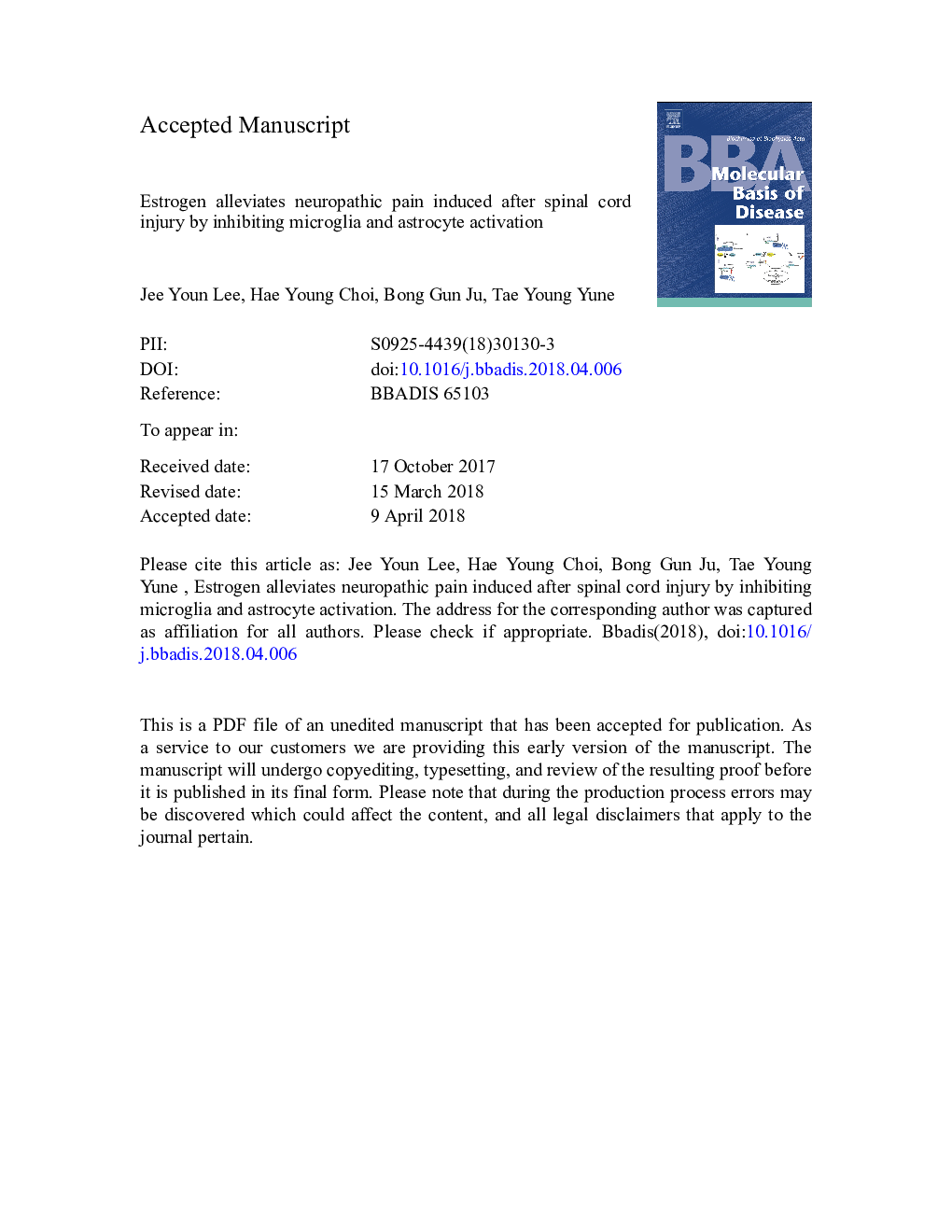| Article ID | Journal | Published Year | Pages | File Type |
|---|---|---|---|---|
| 8258401 | Biochimica et Biophysica Acta (BBA) - Molecular Basis of Disease | 2018 | 33 Pages |
Abstract
Neuropathic pain after spinal cord injury (SCI) is developed in about 80% of SCI patients and there is no efficient therapeutic drug to alleviate SCI-induced neuropathic pain. Here we examined the effect of estrogen on SCI-induced neuropathic pain at below-level and its effect on neuroinflammation as underlying mechanisms. Neuropathic pain is developed at late phase after SCI and a single dose of 17β-estradiol (100, 300â¯Î¼g/kg) were administered to rats with neuropathic pain after SCI through intravenous injection. As results, both mechanical allodynia and thermal hyperalgesia were significantly reduced by 17β-estradiol compared to vehicle control. Both microglia and astrocyte activation in the lamina I and II of L4-5 dorsal horn was also inhibited by 17β-estradiol. In addition, the levels of p-p38MAPK and p-ERK known to be activated in microglia and p-JNK known to be activated in astrocyte were significantly decreased by 17β-estradiol. Furthermore, the mRNA expression of inflammatory mediators such as Il-1β, Il-6, iNos, and Cox-2 was more attenuated in 17β-estradiol-treated group than in vehicle-treated group. Particularly, we found that the analgesic effect by 17β-estradiol was mediated via estrogen receptors, which are expressed in dorsal horn neurons. These results suggest that 17β-estradiol may attenuate SCI-induced neuropathic pain by inhibiting microglia and astrocyte activation followed inflammation.
Related Topics
Life Sciences
Biochemistry, Genetics and Molecular Biology
Ageing
Authors
Jee Youn Lee, Hae Young Choi, Bong-Gun Ju, Tae Young Yune,
